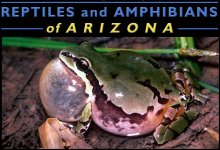| Range: |
 |
| Other Names: |
Great Plains Narrow-mouthed Toad |
| Description: |
Adult Western narrow-mouthed toads measure from 0.75-1.6 inches snout-vent length. The species has smooth, thick skin; the head is small and pointed to facilitate burrowing. The hind legs are short and stout, and the fingers and toes are not webbed. The toe tips are rounded and tapered. Colorations vary in adults from brown, brownish-gray, to gray. Young are camouflaged with dark leaf patterns that grow paler with age. Adult males tend to have a dark, yellow throat. Tadpoles grow to about 1.5 inches, are grayish-tan dorsally, and have dark tail tips. The eyes are spaced far apart on the sides of the head, and the labial tooth rows found in the mouth parts of other tadpoles are absent. |
| Similar Species: |
With the small plump body shape, short limbs and distinctly pointed snout, they shouldn't be confused with any other species. Juvenal specimens of Spadefoots (Plains, New Mexico and Couch's) have spades on the soles of their hind feet. Juvenal Barking Frogs also lack webbing between the toes; however, they are distinctly marked by a broad, cream-colored band across the back. |
| Habitat: |
All specimens of G. olivacea known from New Mexico have been collected from low-lying, flooded roadside ditches between elevations of 4202-4402 ft in overgrazed desert scrub dominated by mesquite, creosotebush, and various arid-land grasses. |
| Behavior: |
This secretive toad burrows into crevices and under rocks and bark that surround ephemeral streams and flooded areas. They may also be found near ant and termite nests. |
| Hibernation: |
|
| Reproduction: |
An explosive breeder, Western narrow-mouthed toads breed during the summer monsoons from June to September. In the desert, breeding sites are often muddy stock tanks or ephemeral sloughs surrounded by a thick growth of mesquites, but in the mountains, the species also breeds in ephemeral streams and springs. The male's advertisement call is a high-pitched nasal whine or buzz. Ventral glands in the male aid in amplexus by creating a sticky surface so that they stay attached to the female. Females lay from several hundred to as many as 2,100 eggs in packets of 100-200. Egg masses often appear as films on the water's surface, but may become attached to vegetation. Eggs hatch in 2 days and metamorphosis occurs in 28-50 days. |
| Diet: |
Western narrow-mouthed toads eat a variety of small invertebrates, but the majority of prey items are ants, termites, and small beetles. |
Adapted from account on reptilesofaz.org
Sources:


|









